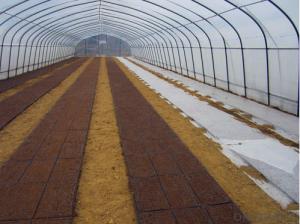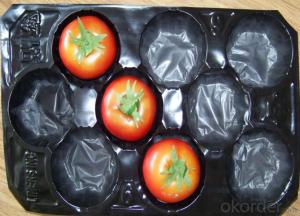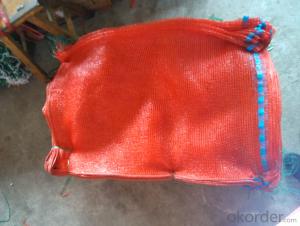Nonwoven Bag for shopping food
- Loading Port:
- Qingdao
- Payment Terms:
- TT OR LC
- Min Order Qty:
- -
- Supply Capability:
- 50000pcs m²/month
OKorder Service Pledge
Quality Product, Order Online Tracking, Timely Delivery
OKorder Financial Service
Credit Rating, Credit Services, Credit Purchasing
You Might Also Like
Nonwoven Bag for shopping food
It is made from PP, non woven fabric m slikcreen with handle .
Description:
1). Material: Eco-friendly non-woven fabrics.
2). Printing: CMYK silkcreen printing, heat transfer, lamination, etc.
3). Handle: Self non woven fabric stitched with "X" to reinforce, "X" not visible from the outside
4). Weight: 80GSM, 60-120GSM non woven fabric can be choose.
5). Size: Your request is welcomed, customized.
6). Features: Eco-firendly, high quality, recyclable, reasonable price, 100%manufacturer.
7). Application: Suitable for advertisement, gift bag, grocery store, surpermarket shopping, sales promotion and so on.
8). Color reference: CMYK/PMS/full color
Item no. XHWK001
Size: 30cmW*45cmH
Material non woven
Weight: 80gsm
Piping: No piping, inside sew
Handle: Non woven
Print: Silkscreen
Others: Punched plastic handle
Label: As customized sew or not sew "made in china" label
Packing: 100pcs per carton; 1 opp bag for one carton or customerized
1). Material: Eco-friendly non-woven fabrics.
2). Printing: CMYK silkcreen printing, heat transfer, lamination, etc.
3). Handle: Self non woven fabric stitched with "X" to reinforce, "X" not visible from the outside
4). Weight: 80GSM, 60-120GSM non woven fabric can be choose.
5). Size: Your request is welcomed, customized.
6). Features: Eco-firendly, high quality, recyclable, reasonable price, 100%manufacturer.
7). Application: Suitable for advertisement, gift bag, grocery store, surpermarket shopping, sales promotion and so on.
8). Color reference: CMYK/PMS/full color
Item no. XHWK001
Size: 30cmW*45cmH
Material non woven
Weight: 80gsm
Piping: No piping, inside sew
Handle: Non woven
Print: Silkscreen
Others: Punched plastic handle
Label: As customized sew or not sew "made in china" label
Packing: 100pcs per carton; 1 opp bag for one carton or customerized
1.What is your main products ?
Our main products are made from PE ,PP etc and could be used for agriculture and construction ,etc .
2.What is your payment term ?
We could accept TT ,LC.
3.What is your delivery time ?
The delivery time is around 30days per container, sometimes we have stocks .
- Q: Are agricultural plastic products resistant to fire?
- No, agricultural plastic products are not typically resistant to fire.
- Q: This question asks for guidance on selecting the appropriate type of agricultural plastic water pipe for an irrigation system.
- <p>When choosing a suitable type of agricultural plastic water pipe for your irrigation system, consider the following factors: 1) Material: Look for pipes made from durable materials like PVC or PE, which are resistant to chemicals and UV rays. 2) Diameter: Select a pipe diameter that matches your water flow requirements. Larger pipes are suitable for higher flow rates. 3) Pressure Rating: Ensure the pipe can withstand the pressure of your water source. 4) Flexibility: Flexible pipes can be easier to install and navigate around obstacles. 5) Cost: Compare prices and lifespan to find a cost-effective option. 6) Local Conditions: Consider the climate and soil conditions, as some materials may degrade faster in certain environments. Always consult with a local irrigation specialist or supplier for recommendations tailored to your specific needs.</p>
- Q: This question asks about the typical issues encountered with agricultural plastic products and seeks solutions to these problems.
- <p>Common problems with agricultural plastic products include degradation, environmental pollution, and difficulty in recycling. To address these issues, one can use biodegradable plastics, which break down naturally over time, reducing environmental impact. Additionally, implementing recycling programs for plastic waste can help mitigate pollution. Farmers can also be educated on proper disposal methods to prevent plastic waste from entering waterways and harming ecosystems. Lastly, investing in research for more sustainable and eco-friendly alternatives to traditional plastics can lead to long-term solutions for the agricultural industry.</p>
- Q: How do you water plants in a nursery tray?
- To water plants in a nursery tray, you can gently pour water into the tray until it reaches the desired level. It is important to ensure that the water is evenly distributed and does not overflow. Additionally, you can use a spray bottle or misting nozzle to apply water directly to the plants' leaves to promote healthy growth.
- Q: How are plastic livestock tags used for animal identification?
- Plastic livestock tags are used for animal identification by attaching them to the ears or other body parts of livestock such as cows, sheep, or pigs. These tags typically contain unique identification numbers or codes that help farmers and ranchers keep track of individual animals within their herds. The tags are durable and long-lasting, making them ideal for permanent identification. They can be easily scanned or read using electronic devices, allowing for efficient record-keeping, tracking of medical treatments, breeding history, and overall management of the animals.
- Q: What are the best ground cover plants for alkaline soil?
- Some of the best ground cover plants for alkaline soil include creeping thyme, creeping phlox, Russian sage, sedum, and yarrow. These plants are known for their ability to thrive in alkaline conditions and provide excellent coverage for the ground.
- Q: Can nursery trays be used for growing bee-friendly plants?
- Yes, nursery trays can be used for growing bee-friendly plants. These trays provide a convenient and organized way to start seedlings or propagate plants, including those that attract and support bees. By using nursery trays, gardeners can ensure proper spacing, nutrient-rich soil, and efficient watering, all of which are essential for the healthy growth of bee-friendly plants.
- Q: Are nursery trays biodegradable?
- Yes, nursery trays can be biodegradable. Many nurseries now offer biodegradable trays made from materials such as recycled paper, cardboard, or bioplastics. These trays break down naturally over time, reducing waste and environmental impact.
- Q: My mom is almost ddone with building her chicken coop. Now she is just putting on the finishing touches. She is wondering if chickens will nest in plastic boxes if they are cut right and such.
- Plastic okorder /
- Q: Are there any alternatives to using agricultural plastic products?
- Yes, there are several alternatives to using agricultural plastic products. Some alternatives include using biodegradable and compostable materials such as plant-based mulch films and biodegradable pots. Additionally, practices such as crop rotation, integrated pest management, and organic farming can reduce the need for plastic products in agriculture.
Send your message to us
Nonwoven Bag for shopping food
- Loading Port:
- Qingdao
- Payment Terms:
- TT OR LC
- Min Order Qty:
- -
- Supply Capability:
- 50000pcs m²/month
OKorder Service Pledge
Quality Product, Order Online Tracking, Timely Delivery
OKorder Financial Service
Credit Rating, Credit Services, Credit Purchasing
Similar products
Hot products
Hot Searches
Related keywords






















